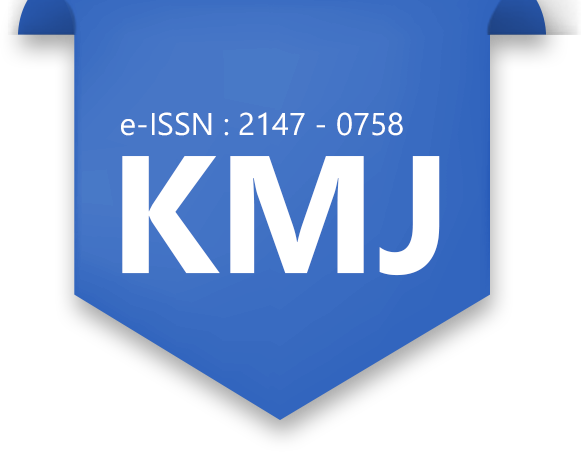
Evaluatıon Of The Causes Of Faılure In Elderly Patıents After Dıfferent Fıxatıon Methods In Pertrochanterıc Femur Fractures
hasan ulaş oğur1, ümit tuhanioğlu1, fırat seyfettinoğlu1, Emre Fidan1, Hakan Uslu1, Ulaş Serarslan21Adana City Training And Research Hospital,Orthopaedics And Traumatology,Adana,Turkey2Kocaeli Derince Training And Research Hospital,Orthopaedics And Traumatology,Kocaeli,Turkey
INTRODUCTION: To investigate the efficiency and failure of different fixation methods in trochanteric region fractures owing to different biomechanics of older bone. The causes of failure in different fracture types were evaluated in accordance with their priority.
METHODS: The study included 186 elderly patients aged ≥65 years, who underwent surgery and were followed up between April 2011 and October 2016. The mean follow-up period was 16 months. Fractures were classified in accordance with AO-Müller/Orthopaedic Trauma Association (AO/OTA) classification. Proximal Femoral Nail (PFN) was applied to 98 patients, Proximal Femur Locking Compression Plate (PF-LCP) to 14 patients, and Dynamic Hip Screw (DHS) to 74 patients. The causes of failure after fixation were evaluated. The clinical results were evaluated in accordance with the Salvati and Wilson hip score, and Baumgaertners reduction standards were used in the evaluation of radiological results.
RESULTS: Nine failures were detected in PFN, 5 in DHS, and 2 were detected in PF-LCP. Twelve patients were regarded to have unstable fractures in accordance with the AO classification (31A2.2-3 and 31A3). Four were stable fractures(31A2.1) of which; 2 had DHS, and 2 had PFN.
DISCUSSION AND CONCLUSION: Fracture classification defines the fracture as stable or unstable, which is very important for the selection of the appropriate implant. It is thought that some 31 A2.1 type fractures and osteoporotic fractures with a thin lateral cortex which are accepted as stable should be approached with suspicion and could be evaluated as unstable. Provision of medial calcar and posteromedial cortex continuity is one of the most important criteria for the prevention of failure. Computerized tomography can be used to detect posteromedial continuity.
Keywords: pertrochanteric fracture, elderly, fixation
Geriatrik Pertrokanterik Femur Kırıklarında Farklı Fiksasyon Metodları Sonrası Gelişen Yetmezlik Nedenlerinin Değerlendirilmesi
hasan ulaş oğur1, ümit tuhanioğlu1, fırat seyfettinoğlu1, Emre Fidan1, Hakan Uslu1, Ulaş Serarslan21Adana Şehir Eğitim Ve Araştırma Hastanesi Ortopedi Ve Travmatoloji,Adana,Türkiye2Kocaeli Derince Eğitim Ve Araştırma Hastanesi Ortopedi Ve Travmatoloji,Kocaeli,Türkiye
GİRİŞ ve AMAÇ: Yaşlı kemiğin farklı biyomekaniği dolayısıyla trokanterik bölge kırıklarında farklı fiksasyon yöntemlerinin etkinliği ve yetersizliklerini ortaya koymak amaçlanmıştır. Farklı kırık tiplerinde yetmezlik sebepleri öncelik sırasına göre değerlendirilmiştir
YÖNTEM ve GEREÇLER: Bu çalışmaya Nisan 2011- Ekim 2016 yılları arasında ameliyat edilen ve takibi sağlanabilen 65 yaş ve üstü 186 geriatrik hasta (115 kadın,71erkek) dahil edildi. Hastaların ortalama takip süresi 16 ay idi. Kırıklar AO/OTA sınıflamasına göre sınıflandırıldı. 98 hastaya PFN, 14 hastaya proksimal kilitli femur plağı(PF-LCP),74 hastaya DHS uygulandı. Fiksasyon sonrası yetmezlik nedenleri değerlendirildi. Klinik sonuçlar Salvati ve Wilsons kalça skoruna göre, radyolojik sonuçlar Baumgaertner redüksiyon ölçütlerine göre değerlendirildi.
BULGULAR: Yetmezlik görülen 16 hastanın 9 u Proksimal femur çivisi (PFN) 5i DHS, 2si proksimal femur plağı yapılan hasta idi. 12 hasta AO sınıflamasına göre instabil kabul edilen kırıklardı.4ü stabil olup 2si DHS yapılan 2si PFN yapılan hastalar idi.
TARTIŞMA ve SONUÇ: Kırık sınıflaması kırığı stabil veya instabil olarak tanımlar; bu uygun implant seçimi için çok önemlidir. Stabil kabul edilen ince lateral korteksi olan 31 A2.1 tipi kırıklar ve osteoporotik kırıklara şüphe ile yaklaşılması ve instabil olarak değerlendirilebileceği düşünülmektedir.Medial kalkar ve posteromedial korteks devamlılığının sağlanması, başarısızlığın önlenmesinde en önemli kriterlerden biridir. Postoromedial devamlılığı tespit etmek için bilgisayarlı tomografi kullanılabilir.
Anahtar Kelimeler: pertrokanterik kırık, yaşlı, fiksasyon
Manuscript Language: English












